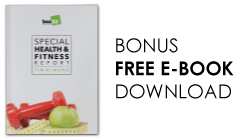At Adaptive Strength, we believe that real progress doesn’t come from isolating individual muscles—it comes from improving how your body moves as a whole.
That’s why one of our core principles is this:
“Train patterns, not parts.”
In traditional gyms or rehab settings, it’s common to hear things like:
- “You’ve got weak glutes.”
- “Your quads aren’t firing properly.”
- “Let’s stretch your hamstrings.”
But those are just pieces of a much bigger puzzle. Pain, dysfunction, or poor performance rarely come from just one muscle. And focusing only on parts often leads to chasing symptoms—not fixing the problem.
At Adaptive Strength, we focus on movement patterns—because that’s where the real solution lives.
What Are Movement Patterns?
Movement patterns are the fundamental ways your body moves in daily life and in training. These include:
- Squat
- Hinge
- Lunge
- Push
- Pull
- Carry
- Rotate
- Gait (walking and running)
Each of these patterns involves multiple joints, muscles, and systems working together. For example, a squat isn’t just about your quads—it also involves your hips, knees, ankles, spine, core, and even your breathing mechanics.
When one part of that chain is off, the whole pattern suffers.
That’s why we assess and train movement patterns—not just the muscles involved.
The Problem with a Parts-Based Approach
Most people have been taught to think in terms of body parts. Got back pain? Strengthen your core. Knee pain? Strengthen your quads. Shoulder pain? Do some band rotator cuff work.
But here’s the catch: Pain is often the end result, not the starting point.
It’s the signal that something deeper in your movement system isn’t working right.
For example:
- Knee pain may actually be coming from poor hip control or ankle stiffness.
- Shoulder pain might be due to limited thoracic mobility or poor scapular positioning.
- Back pain could be the result of shallow breathing and an unstable core.
You could strengthen or stretch the “target area” all you like—but if the root issue is in the pattern, you’ll never fully fix it.
How We Do It at Adaptive Strength
We take a different approach—starting with movement, not muscles.
Step 1: We Assess Patterns, Not Just Pain
Before prescribing exercises, we look at how your body moves.
We assess key movement patterns like your squat, hinge, and gait to identify breakdowns, imbalances, or compensations. We also observe breathing, posture, and joint mobility to understand the full picture.
Step 2: We Rebuild the Pattern
Instead of giving you 10 band exercises for one “weak” muscle, we rebuild the pattern using drills that integrate multiple systems:
- Crawling for core and coordination
- Breathing and bracing for core control
- Loaded carries for posture, grip, and trunk stability
- Functional kettlebell lifts to develop strength within real-life patterns
We reinforce efficient movement and correct mechanics—so your body starts working the way it was designed to.
Step 3: We Load the Pattern
Once the pattern is clean, we strengthen it.
Not just to look good in the gym—but to move better in real life. That’s when strength becomes meaningful: when it transfers to the way you walk, lift, twist, run, and play.
Why This Approach Gets Better Results
Training patterns creates changes that last. You’re not just chasing short-term relief—you’re restoring long-term function.
Here’s what happens when you train patterns over parts:
- You stop compensating. Other muscles stop doing the job of ones that aren’t working.
- You move with more control and less pain. The system is more efficient.
- You gain strength that transfers. It’s not just gym strength—it’s life strength.
- You recover better. Because your movement becomes more balanced and efficient.
- You prevent future injuries. When the full chain works together, you’re more resilient.
Clients often tell us things like:
“My shoulder doesn’t hurt anymore—even though we barely worked on it directly!”
“I can finally squat without back pain.”
“I feel connected when I move now.”
That’s the power of training patterns.
Why Movement Patterns Matter in Perth’s Active Lifestyle
Living in Perth means being active—whether it’s walking along the Swan River, hiking in the hills, or getting stuck into weekend sport. Your body needs to be able to move well, not just look strong.
If you’re in Booragoon, Melville, Myaree, or anywhere nearby, our training programs are designed to help you move better, not just train harder. Whether you’re recovering from injury, returning to sport, or building strength from the ground up, we focus on the patterns that matter most.
Don’t Just Train Hard—Train Smart
If you’ve tried foam rolling, stretching, or isolation exercises with limited results…
If you’ve been through physio or gym programs that didn’t stick…
If you want to build strength, performance, and long-term resilience…
It’s time to look beyond the parts—and fix the pattern.
At Adaptive Strength, we bring together physiotherapy, personal training, and movement coaching to help you move better, feel stronger, and perform at your best.
Ready to Experience the Difference?
Book your Movement Assessment today and discover how we can help you move the way your body was designed to.
📍 Located in Booragoon, we help people across Perth move smarter and live stronger.
💪 Physio-led strength training | Movement-based rehab | Performance coaching




